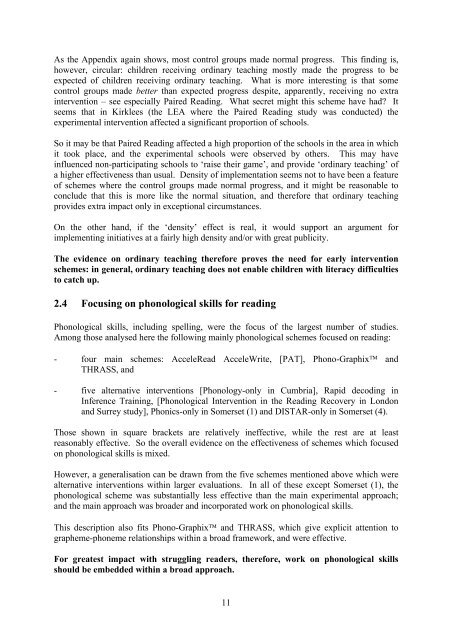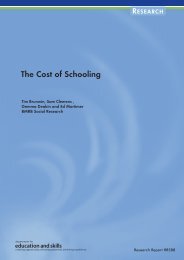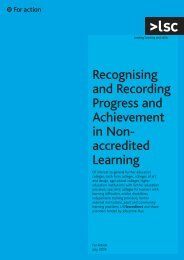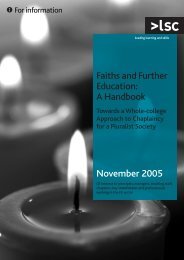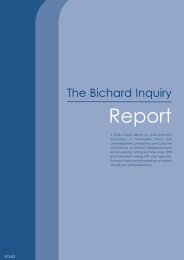What Works for Children with Literacy Difficulties? - Digital ...
What Works for Children with Literacy Difficulties? - Digital ...
What Works for Children with Literacy Difficulties? - Digital ...
You also want an ePaper? Increase the reach of your titles
YUMPU automatically turns print PDFs into web optimized ePapers that Google loves.
As the Appendix again shows, most control groups made normal progress. This finding is,<br />
however, circular: children receiving ordinary teaching mostly made the progress to be<br />
expected of children receiving ordinary teaching. <strong>What</strong> is more interesting is that some<br />
control groups made better than expected progress despite, apparently, receiving no extra<br />
intervention – see especially Paired Reading. <strong>What</strong> secret might this scheme have had? It<br />
seems that in Kirklees (the LEA where the Paired Reading study was conducted) the<br />
experimental intervention affected a significant proportion of schools.<br />
So it may be that Paired Reading affected a high proportion of the schools in the area in which<br />
it took place, and the experimental schools were observed by others. This may have<br />
influenced non-participating schools to ‘raise their game’, and provide ‘ordinary teaching’ of<br />
a higher effectiveness than usual. Density of implementation seems not to have been a feature<br />
of schemes where the control groups made normal progress, and it might be reasonable to<br />
conclude that this is more like the normal situation, and there<strong>for</strong>e that ordinary teaching<br />
provides extra impact only in exceptional circumstances.<br />
On the other hand, if the ‘density’ effect is real, it would support an argument <strong>for</strong><br />
implementing initiatives at a fairly high density and/or <strong>with</strong> great publicity.<br />
The evidence on ordinary teaching there<strong>for</strong>e proves the need <strong>for</strong> early intervention<br />
schemes: in general, ordinary teaching does not enable children <strong>with</strong> literacy difficulties<br />
to catch up.<br />
2.4 Focusing on phonological skills <strong>for</strong> reading<br />
Phonological skills, including spelling, were the focus of the largest number of studies.<br />
Among those analysed here the following mainly phonological schemes focused on reading:<br />
- four main schemes: AcceleRead AcceleWrite, [PAT], Phono-Graphix and<br />
THRASS, and<br />
- five alternative interventions [Phonology-only in Cumbria], Rapid decoding in<br />
Inference Training, [Phonological Intervention in the Reading Recovery in London<br />
and Surrey study], Phonics-only in Somerset (1) and DISTAR-only in Somerset (4).<br />
Those shown in square brackets are relatively ineffective, while the rest are at least<br />
reasonably effective. So the overall evidence on the effectiveness of schemes which focused<br />
on phonological skills is mixed.<br />
However, a generalisation can be drawn from the five schemes mentioned above which were<br />
alternative interventions <strong>with</strong>in larger evaluations. In all of these except Somerset (1), the<br />
phonological scheme was substantially less effective than the main experimental approach;<br />
and the main approach was broader and incorporated work on phonological skills.<br />
This description also fits Phono-Graphix and THRASS, which give explicit attention to<br />
grapheme-phoneme relationships <strong>with</strong>in a broad framework, and were effective.<br />
For greatest impact <strong>with</strong> struggling readers, there<strong>for</strong>e, work on phonological skills<br />
should be embedded <strong>with</strong>in a broad approach.<br />
11


